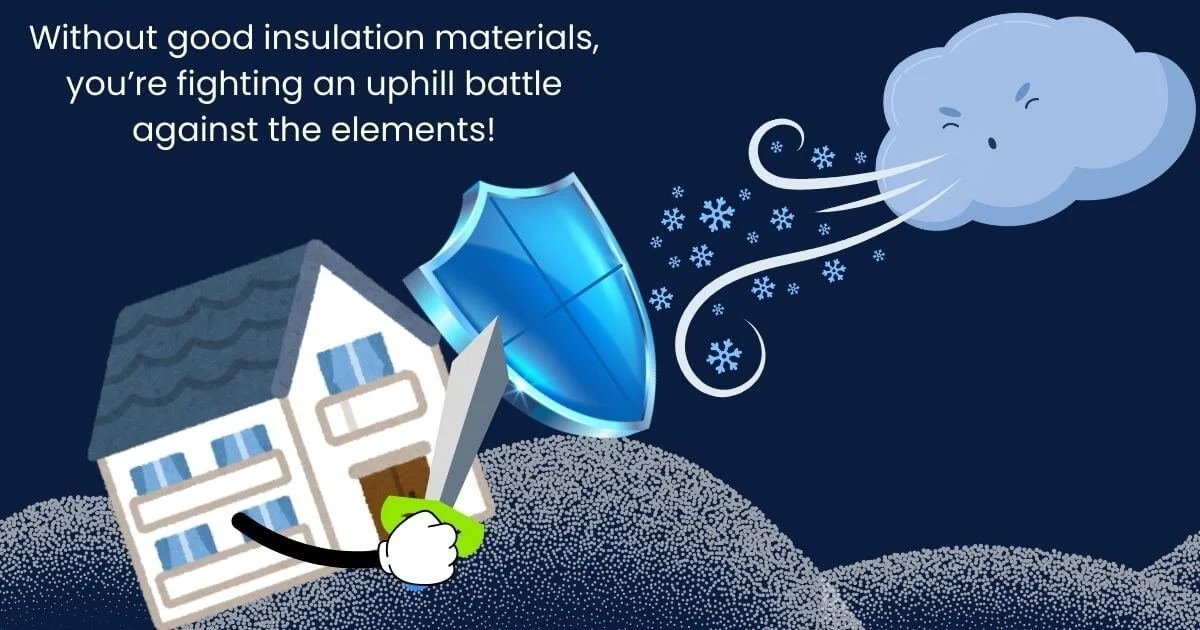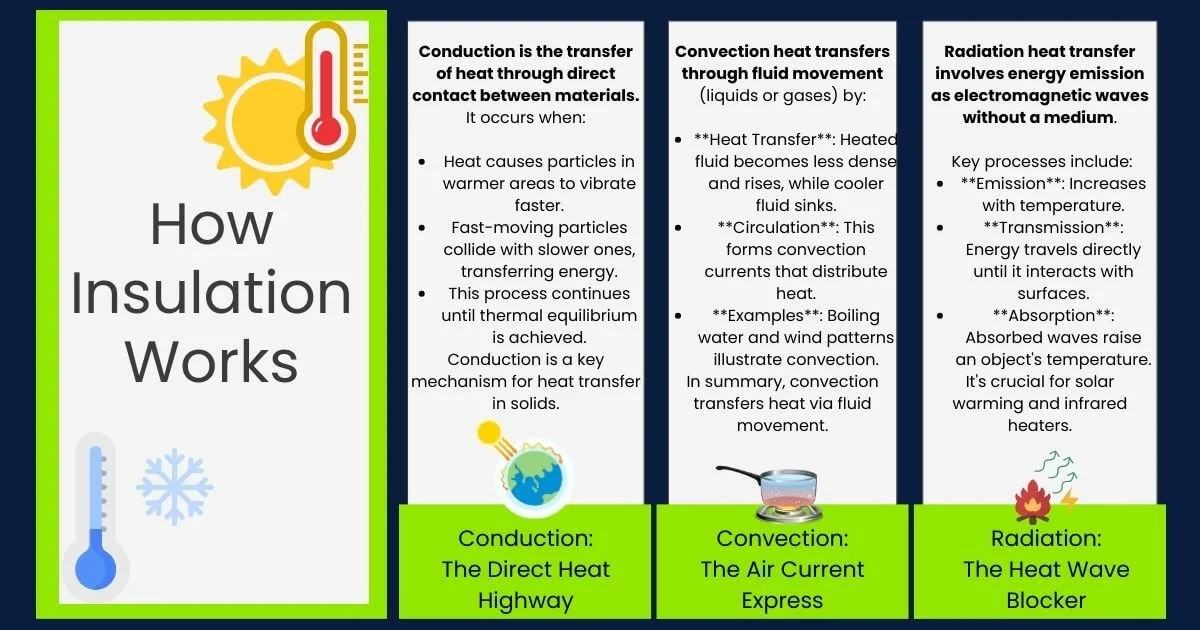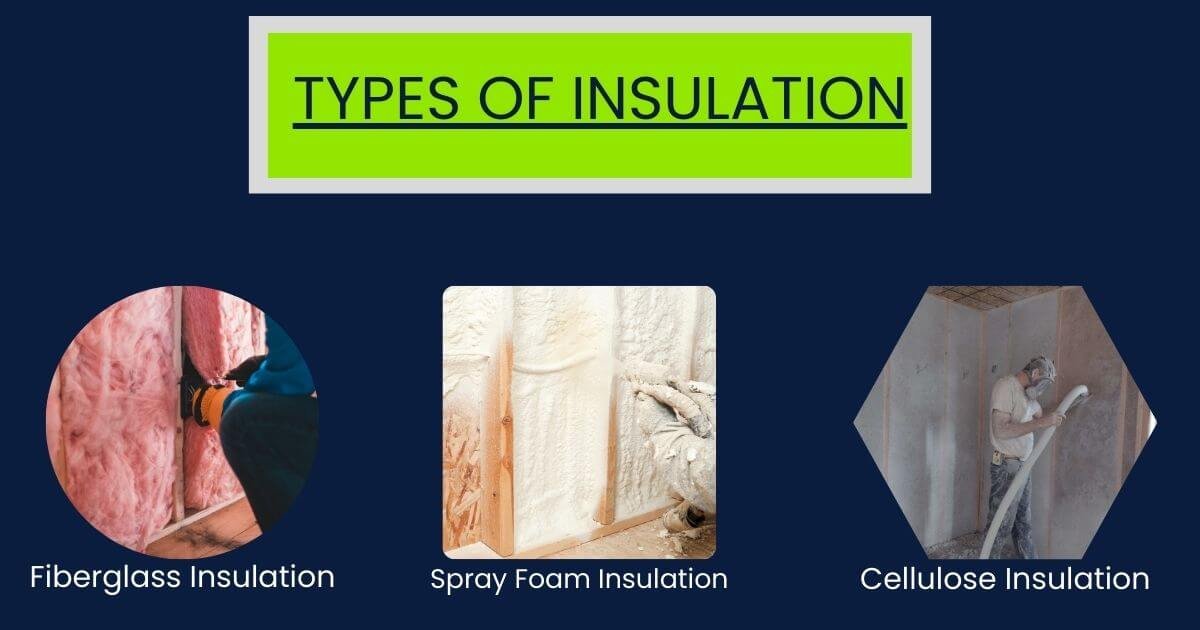TheScience Behind Insulation: How It Works
Ever wonder why your cozy blanket keeps you warm on a chilly night? That same simple idea is working in your walls right now! Let's explore the science of insulation and how insulation works to keep your home comfortable in both winter and summer.
What is Insulation and Why Do You Need It?
Think of home insulation as your house's main ally! Your heating and cooling system works hard to keep your space comfortable, but without good insulation materials, you're fighting an uphill battle. Here's what insulation does:
Controls heat flow to keep your home warmer in winter and cooler in summer
Protects your electrical wiring
Blocks sound from traveling between rooms and from outside
Helps prevent moisture problems that could damage your walls
Heat moves naturally from warmer to cooler spaces - just like how your hot coffee eventually cools down to room temperature. Without insulating materials in your walls, heat loss in winter and heat transfer in summer will keep your heating and cooling bills sky-high. That's why proper insulation with the right R value is so important - it helps maintain the temperature you want while improving your home energy efficiency.
How Insulation Works
Let's break down how insulation works in your home. Thermal insulation works by restricting heat flow through three mechanisms. Your insulation materials work to stop each one. Here's what's happening behind your walls:
Conduction: The Direct Heat Highway
Think of conduction like this - when you touch a hot pan on the stove, the heat travels straight through the pan to your hand. That's conduction! Different types of insulation slow down this direct heat flow. Kind of like a hot pad would insulate your hand. The thicker your insulation's thermal resistance (measured by that handy R value), the better it stops heat from traveling through your walls.
Convection: The Air Current Express
Ever notice how warm air rises to the ceiling? That's convection at work! Natural convection happens when warmer air floats up while cooler air sinks down. Your insulation products trap tiny pockets of air, stopping these air currents from moving heat around. This is especially important in your walls and attic where air movement can really impact your heating and cooling bills. Convection is the transfer of heat through the movement of fluids and air, with closed-cell insulation inhibiting convection within the cell.
Radiation: The Heat Wave Blocker
Radiation is how the sun warms your face on a sunny day - the heat travels in waves through the air. Radiation is the transmission of infra-red radiant energy from a ‘hot’ surface to a ‘cold’ surface through air or a vacuum. This radiant heat transfer is a big deal, especially in summer when your roof absorbs heat from the sun. That's where materials like radiant barriers come in handy, using their low emissivity surface to bounce that heat away from your living space.
Types of Insulation
When it comes to insulation materials, there's more than one way to keep your home comfortable! Different areas of your home need different types of insulation. Your choices might include blanket-style insulation that rolls out between floor joists, loose materials that can be blown into tight spaces, or rigid foam board that's perfect when you need a high R value without much thickness. The type you choose depends on where you're installing insulation, how much insulating power (that's the R value again!) you need, and what your budget looks like.
Fiberglass
The pink stuff you probably picture when thinking about insulation! Fiberglass is like a blanket made of tiny glass fibers that trap air to provide excellent thermal resistance. It's one of the most common insulation products you'll find, and for good reason - it's effective and budget-friendly.
Cellulose
Made from recycled paper products, cellulose is the eco-warrior of insulation materials. It's great for filling existing walls and attics, and its density helps reduce both heat flow and noise. When installed properly, cellulose can significantly boost your home energy efficiency.
Foam Board
Think of foam board as your home's thermal shield. This rigid foam provides a high R-value per inch of thickness, making it perfect for areas where space is tight. It's especially good at reducing heat loss through your walls and roof.
Mineral Wool
Also known as rock wool, this durable insulation is fire-resistant and excellent for soundproofing. It's particularly good at handling high temperatures and works great in attics where heat tends to build up.
Benefits Beyond Temperature Control
While controlling temperature is insulation's main job, it's got some impressive side gigs too:
Energy Savings: Properly installed insulation can dramatically reduce your heating and cooling bills
Sound Control: Ever notice how well-insulated rooms are quieter? That's because insulation absorbs sound waves too
Moisture Management: Good insulation helps prevent condensation that can lead to mold and structural damage
Environmental Impact: Less energy use means a smaller carbon footprintInsulation reduces the need for heating and cooling system operation, saving energy and money on heating and cooling bills.
Insulation increases home energy efficiency by reducing heat loss in the winter and heat gain in the summer.
Properly installed insulation maintains a consistent temperature from room to room and reduces heating and cooling bills.
Insulation can also be used for soundproofing and electrical insulation.
Insulation Installation and Maintenance
Let's talk about installing that insulation properly - because even the best insulating materials won't do their job if they're not installed correctly. While some insulation projects might seem DIY-friendly, professional installation often pays for itself.
Professional Installation
Our experienced installers know exactly what to look for before adding any insulation. They'll start by checking for and sealing any sneaky air leaks that could make your new insulation less effective. They're experts at handling those tricky spots around floor joists and electrical boxes - areas that need special attention to get the right coverage.
Plus, they know exactly how to achieve the proper density and thickness for optimal performance. Perhaps most importantly, they understand how to ensure proper ventilation to prevent moisture issues that could cause problems down the road.
Maintenance Tips
Your insulation needs occasional check-ups to keep performing at its best:
Look for signs of moisture or water damage
Check for settling in areas with loose-fill insulation
Inspect for gaps or compressed areas
Keep an eye on your energy bills for sudden changes
Choosing the Right Insulation
When we talk about insulation, R-value is like a report card for how well it resists heat flow. The higher the R-value, the better the thermal resistance. But here's the thing - you don't always need the highest R-value possible. The right R-value depends on your climate, where you're installing the insulation, and local building codes.
The right type of insulation depends on the specific application, climate, and desired R-value.
Consider factors such as cost, durability, and environmental impact when selecting insulation materials.
Look for insulation materials with high thermal resistance and low thermal conductivity.
Consider hiring a professional to install insulation for optimal performance.
The Energy Efficiency Connection
When insulation materials are installed properly throughout your home, they create a powerful barrier against heat flow. Insulation can help reduce heat flow and minimize heat transfer, lowering heating and cooling bills. Your heating and cooling system won't have to work nearly as hard to maintain temperature, which means lower heating and cooling bills year-round.
The right types of insulation with proper R-value help reduce heat loss in winter and keep your home cooler in summer. Spaces stay at consistent temperatures without constantly making your heating and cooling system run. Many homeowners are amazed to see how much thermal resistance affects their monthly bills!
Ready to Improve Your Home's Comfort?
Now that you understand the science of insulation and how insulation works, it's time to put that knowledge to work in your own home! When you're ready to start your insulation project, take time to consider what matters most for your space. Think about your local climate and how it affects heat flow through your home. Consider which insulation materials will work best in different areas. Remember that proper R value requirements might vary depending on your location and building codes. And while budget matters, remember that investing in quality insulation products and professional installation typically pays for itself through lower heating and cooling bills.




